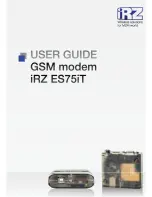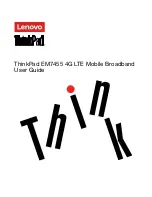
Vonage V-Portal User Guide
View the Terms of Service by visiting the Vonage website at www.vonage.com/tos. Pay particular attention to
Section 11 which explains limitations on Warranty, Remedy and Liability.
111
share your Internet connection.
Lease Time
The amount of time that a network user/client will be allowed to remain connected
to the router using their current IP Address.
MAC
address
In a network, the MAC address is a unique number that identifies a specific
hardware interface. It is a 12-digit hexadecimal number.
Modem
A piece of network equipment that you use to gain access to the Internet – typically
either DSL through your phone line or Cable service.
Multicast
Multicast is the communication of information to a group of destinations
simultaneously. Multicast communication is between a single sender and multiple
receivers on a network.
Ping
Packet Internet Groper. Ping is a utility that is used to determine if a particular IP
address is present on line and accessible. It works by sending a packet to the IP
address in question and waiting for a reply.
Popup
Window
A pop up window is a term used for a secondary window that appears (“pops up”)
in your web browser. They are usually generated using Javascript and are often
used as a form of online advertising.
Port
A port is an interface or connection. There are two types of ports - physical and
logical. Physical ports allow you to connect network devices. For example, your V-
Portal has 4 ports on it. One Ethernet port, an Internet port where you can connect
a modem and 2 phone ports where you can connect your telephones or fax
machine.
In TCP/IP networks, ports are logical connections. Every IP address is divided into
ports. This allows one IP address to be used by multiple programs to send and
receive data at the same time. Logical ports are assigned numbers that identify the
type of port it is. For example, port 80 is used for HTTP traffic and port 110 is used
for email.
PPPoE
Point to Point Protocol over Ethernet. PPPoE is a protocol for connecting users on
an Ethernet LAN to the Internet through a DSL broadband connection. In addition
to data transport, the DSL connection provides authentication through the use of a
user name and password that you or your ISP has selected. Your V-Portal (or your
current home networking equipment) stores this information and sends to your
ISP. Your ISP then checks this information and lets you connect to the Internet
through them.
PPTP
Point to Point Tunneling Protocol. PPTP is used to extend VPNs (Virtual Private
Networks). A VPN is a private network of computers that uses the Internet to
connect some nodes. PPTP allows companies to extend their VPNs by using
private “tunnels” over the Internet. PPTP is used to ensure that messages are
secure when they are transmitted through the tunnels from one VPN to another.
Protocol
A set of rules that, when followed, allows two devices to communicate.
Proxy
A computer that acts as a bridge between two other computers that use different
standards, formats, or protocols.
Router
A network device that lets you connect more than one piece of equipment (like
computers) to your DSL or cable modem to share one Internet connection. Some
ISPs supply combination modem/routers.
SMTP
Simple Mail Transfer Protocol. SMTP is a protocol used for sending and receiving


































